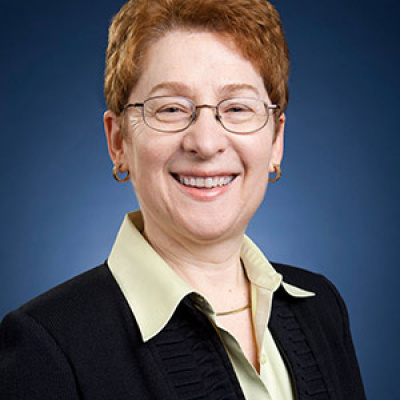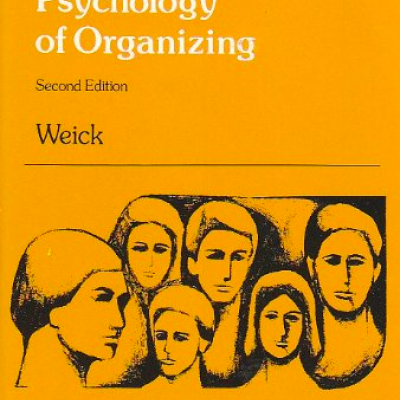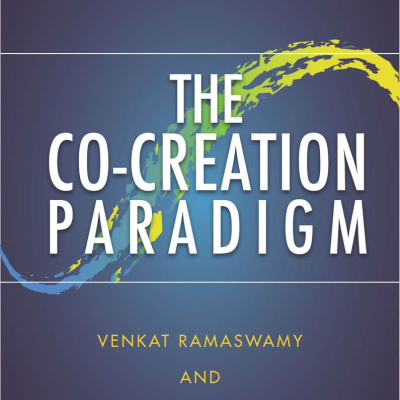Explore the faculty research, thought leadership, and groundbreaking philosophies that established Michigan Ross as one of the world’s top business schools.

Management and Organizations professors Sue Ashford and Jane Dutton invented the concept of "issue selling," arguing that most middle managers don’t simply wait for the organization’s strategy to come down from on high but also actively try to influence what that strategy might be. These active middle managers recognize that organizations have limited attentional capacity, and they try to influence what issues get on the organization’s agenda and gain the attention of top decision-makers for issues such as the need to be more ecologically sensitive, the experiences of gender mistreatment and other social issues. In other words, whereas the literature to that point had construed middle managers as passive recipients, these scholars gave them agency and engaged in several studies to better understand how they use that agency to affect bottom-up change. The impact of this idea can be seen in both the popularity of the advice given to middle managers derived from it and in its anticipation of the larger literature on social movements. Social movements were first studied outside of organizations in society, but scholars later proposed that such movements could also occur within organizations, as in issue selling.
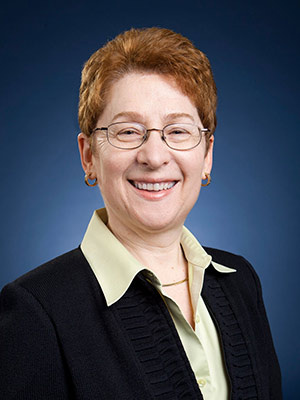
Professor Emerita Valerie Suslow and Adjunct Professor Margaret Levenstein have pursued a collaborative research agenda on the economics of cooperative behavior among firms, with a specific focus on cartels. Agreements between competing firms to reduce the intensity of competition can include actions such as price fixing, allocating geographic markets, allocating customers, and bid-rigging at auctions. Historically, such cooperative behavior was legal throughout the world but illegal in the United States under the Sherman Act of 1890.
The U.S. National Industrial Recovery Act of the early 1930s suspended price-fixing antitrust laws in certain circumstances. In the mid-1990s, after many decades of inattention, it became clear to competition policy enforcers that cartel activity was rampant and was likely causing substantial consumer harm. This spurred new leniency and amnesty policy tools to become available to firms. In their highly cited article "What Determines Cartel Success?" Levenstein and Suslow make the case that while cartels may break up due to cheating on the agreement, the more insurmountable problems are entry and adjustments in the face of changing economic conditions. "Breaking Up Is Hard to Do: Determinants of Cartel Duration" shows that cartels that turn to price wars to punish cheaters are not stable. Highly stable cartels draw upon a vast toolkit of mechanisms to enhance their stability and, therefore, their duration and economic harm.
Levenstein and Suslow's work has been cited in policy reports by organizations around the world, such as the Organization for Economic Cooperation and Development, the United Nations, and the World Trade Organization. They continue to explore hidden or overlooked sources of harm to consumers that may result from cartel activity, most recently turning their attention to the role played by vertical relationships between firms engaged in horizontal collusion, as well as how collusion may be facilitated by the use of a price index in long-term contracts.

Sensory marketing is a relatively new and growing field of marketing that Professor Aradhna Krishna pioneered in the early 2000s. Krishna saw that there were disparate fields of study on senses, but there was no cohesion between these fields. She brought all these sub-fields together under the umbrella of sensory marketing and organized the first conference on it in 2008. She then wrote two books and dozens of scholarly articles on the subject to make the field grow. And the field did grow both in academia and in practice -- enough for Harvard Business Review to do a lead Ideawatch article on it featuring Krishna as the world's foremost expert on the topic. Krishna has defined "sensory marketing" as marketing that engages the consumers' senses and affects their perception, judgment, and behavior. Krishna continues to publish important, scholarly articles on the topic. She also started the Sensory Marketing Lab at Michigan Ross, which attracts PhD students and post-docs from around the world.

In the article "The Core Competence of the Corporation," Professor C. K. Prahalad and his collaborator Gary Hamel introduced a groundbreaking idea about how companies succeed.
They presented the idea that rather than just looking at the products they sell, companies should identify and nurture their core competencies -- the unique abilities and strengths that make them stand out. Those competencies are born from collective experience and knowledge in the company and combine different skills and technologies. Additionally, core competencies are not easy for competitors to copy, therefore giving companies a lasting edge in the market.
In their article, Prahalad and Hamel cautioned companies not to get overly wrapped up in their current products, which might change with time. They advised that instead, companies should focus on understanding and enhancing their deep-rooted strengths as they pave the way for future innovations and market leadership. By recognizing and harnessing core competencies, companies can venture into new markets, innovate, and stay ahead of the competition. In simple terms, companies should know and recognize what they are genuinely good at and use that to shape their future.

Under the leadership of Marian Krzyzowski, Michigan Ross launched the Domestic Corps in 1992 with financial support from the United States Department of Education Fund for the Improvement of Post-Secondary Education. The Domestic Corps provided leadership development and action-based learning opportunities for Ross students while providing critical business assistance to the non-profit community in the United States. For 15 years, the Domestic Corps placed hundreds of students in more than 100 non-profit organizations nationwide, where they worked on projects in economically distressed and culturally diverse communities. That included Native American communities, inner city community-based organizations, and rural non-profits. The Domestic Corps also partnered with the University of Michigan's Neighborhood AmeriCorps Program to place MBA interns in 20 more than Detroit community-based organizations. The Domestic Corps projects helped raise millions of dollars, won national awards for community and economic development, and transformed numerous organizations while simultaneously providing students with management experience in challenging contexts and instilling a sense of corporate responsibility and social justice.
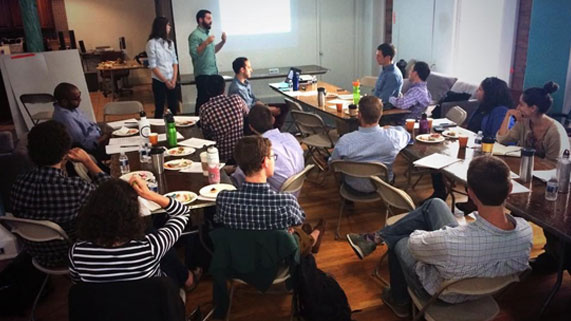
Four student-run venture funds are currently operating at Michigan Ross, more than any other business school. Collectively, these funds manage a portfolio worth more than $10 million. These funds help students learn about investing early-stage capital by making real deals with real companies and real money. The concept of student-run venture funds has been adopted by universities around the world.
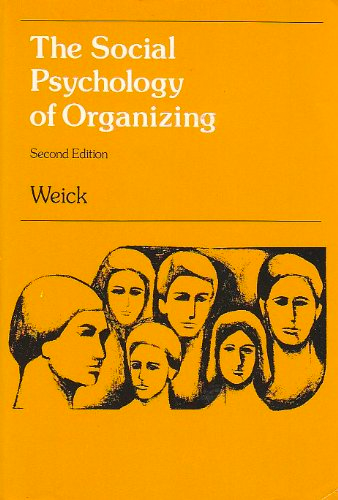
Professor Karl Weick was an iconic founder of the field of organizational behavior. Starting with his seminal book, The Social Psychology of Organizing, which was published in 1969, Weick's ideas had enormous influence, shaping organizational scholarship over the next decades and to this day. He focused on the processes of organizing rather than on organizations per se, suggesting that the insights into those processes give us important leverage to both understand and affect life in organizations. In his book, he introduced the seminal concept of "sense-making," which he defined as "the ongoing retrospective development of plausible images that rationalize what people are doing." Weick's ongoing research focused on how individuals engaged in making meaning and how that meaning-making affected important outcomes in organizations. His book has been cited more than 35,000 times, and his other work on the topic has been cited more than 13,000 times. His pioneering work has instilled a highly influential perspective on the people attempting the organizing work that goes into organizations.
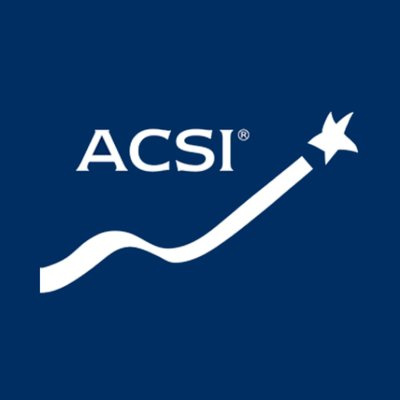
In the 1990s, a research team at Michigan Ross, led by Emeritus Professor Claes Fornell, created the American Customer Satisfaction Index. This groundbreaking project included Professors Eugene Anderson and Michael Johnson, as well as Research Scientist Jaesumg Cha and Barbara Everitt, former director of the U.S. Census Bureau.
ACSI represents a paradigm shift in measuring market performance, offering a more complete view of firms, industries, and economies and treats customer satisfaction as a latent construct connecting expectations, perceived quality and perceived value, through customer satisfaction, to customer voice and loyalty. For the past three decades, ACSI has catalyzed a wealth of peer-reviewed research in marketing and business. Empirical studies consistently find ACSI positively associated with profitability, cash flows, stock returns, credit ratings, positive earnings surprises, revenue, gross margins, return on investment, cash flow stability, and operating margins. Greater ACSI is also associated with lower cost of capital, cost of debt, and selling costs. At a macro level, ACSI is found to be predictive of gross domestic product.
Published research by the ACSI team enjoys wide recognition, garnering more than 100,000 citations. Additionally, ACSI-related research has played an outsized role in establishing customer satisfaction as an essential metric within firms' management information systems, priority setting, and key performance indicators.

Professor Gretchen Spreitzer received her PhD from Michigan Ross in 1992. Her work on empowerment, stemming from her Michigan Ross dissertation, has set the foundation for a new understanding of the employee experience. Instead of capital that organizations needed to control, empowerment brought forth the idea that employees thrive when they are given the freedom and autonomy to do their work autonomously. This pioneering work ushered in a new era of research and a fundamental shift in how organizations view their relationship with employees.

The inception of the Journal of Public Policy and Marketing dates back to 1982 when it was founded by Tom Kinnear, a prominent faculty member from the Michigan Business School. Its initial name was Journal of Marketing and Public Policy. However, due to concerns raised by the American Marketing Association about potential confusion with the Journal of Marketing, it officially adopted its current name in 1983. The primary motivation behind the journal's creation was the growing interest among marketing academics in public policy during that era. During the 1970s and early 1980s, there was a growing interest in issues concerning the intersection of public policy and marketing. This interest encompassed various aspects, including advocacy for children's rights, as well as concerns related to other vulnerable groups such as the elderly, ethnic communities, and those with low income; the environmental impact of consumption and the emergence of what is now termed the "green consumer"; the adoption of energy-efficient practices by consumers following significant increases in gasoline, electric, and natural gas prices; evolving product liability doctrines that were becoming more lenient in terms of protective measures; food labeling and nutritional aspects; new consumer protection laws and measures. It is noteworthy that many of these trends are still relevant today, albeit with some shifts in emphasis, such as the increased focus on climate change.
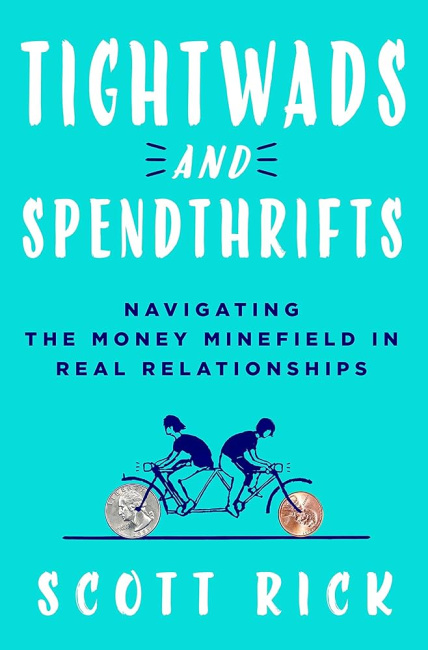
In 2008, an article by Michigan Ross Professor Scott Rick changed how academics, practitioners, and the general public thought about consumers’ spending habits. The key insight was that many people who spend very little are frustrated with their behavior. They consistently spend less than they think they should, often with negative consequences for themselves and those around them. Under-spenders (“tightwads”) and over-spenders (“spendthrifts”) are two sides of the same coin: both experience conflict and distress around their spending habits. The scale Rick and colleagues developed to measure these tendencies has become widely used by marketing and psychology researchers. The tightwad-spendthrift construct attracted even more attention when Rick and colleagues demonstrated that tightwads and spendthrifts are more likely to marry one another than they are to marry someone like themselves. This “opposites attract” pattern is initially enjoyable, but eventually, as partners begin to confront a never-ending series of joint spending and saving decisions, tightwad-spendthrift differences harm relationship quality.
This research has attracted broad attention beyond the boundaries of marketing academia. It has been the topic of webinars, podcasts, and other features produced by the National Science Foundation, the American Psychological Association, the National Academy of Sciences, and the World Economic Forum. It has received years of sustained coverage from media outlets such as NPR, the New York Times, and the Wall Street Journal. Financial organizations like the CFP Board, ING, Charles Schwab, and Equifax have informed their clients and customers about the implications of this research. Most notably, in 2024, St. Martin’s Press published a mass-market book about this research, titled Tightwads and Spendthrifts: Navigating the Money Minefield in Real Relationships.

The Michigan Business Challenge is a prestigious business plan competition hosted by the Zell Lurie Institute for Entrepreneurial Studies. It allows U-M students to showcase their entrepreneurial ideas, receive feedback from experienced judges, and compete for over $100,000 in cash prizes to support their ventures.
The Michigan Business Challenge was established in 1984 at Michigan Ross and has since become one of the region's most impactful and well-known startup competitions. Over the years, the MBC has supported numerous successful startups, generated millions of dollars in funding, and helped launch successful entrepreneurial careers for U-M students and alumni. The MBC is open to various stages of business concepts, from early-stage ideas to established businesses.
The competition consists of three tracks that cater to specific industry sectors, including the Seigle Impact Track for social ventures, the Invention Track for ventures that have intellectual property at the core of their high-tech venture, and the Innovation Track for growing startups. These tracks provide tailored resources, networking opportunities, and funding for participants. Notable entrepreneurial ventures that have come through the MBC include Morning Brew, Xoran Technologies, AMBIQ Micro, Elevate K-12, and many more.

The fields of social movements and organizations had very little overlap until Professors Jerry Davis and Mayer Zald convened a pair of conferences at Michigan Ross in 2001 and 2002 that brought together top scholars from both domains and forged research collaborations that yielded a 2005 Cambridge University Press volume and a 2008 special issue of Administrative Science Quarterly. Zald had previously published a piece on the topic in 1977, as had Davis in 1994. Today, this is a widely recognized and fruitful research domain that arose just in time to explain the increasingly prevalent interplay between corporations and social movements, including boycotts, corporate political activism, and employee social movements.
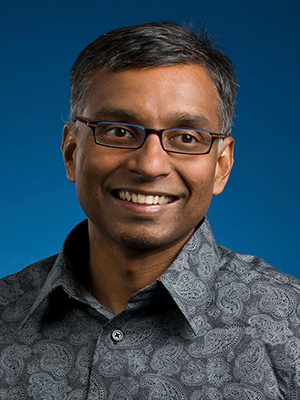
No matter the discipline, business research can have a huge impact on diversity, equity, and inclusion. In 2013, Venky Nagar, KPMG Professor of Accounting, along with former Michigan Ross professor Feng Li, published accounting research on U.S. firms initiating same-sex domestic partnership benefit policies.
Li and Nagar’s paper “Diversity and Performance,” published in Management Science, tests if corporate policy supporting LGBTQ+ rights frees all employees to bring their authentic selves to work, thus improving org culture and performance. The paper finds that the nearly 300 firms that adopted these policies between 1990 and 2006 saw significant improvement in operating performance relative to an approximate 10% average stock price increase. If an investor had accordingly timed their purchases of these firms, they would have outperformed ninety-five percent of all U.S. professional mutual funds.
The paper’s reasoning was core to the 2015 Amicus Brief filed in support of legalizing same-sex marriage by the law firm Morgan Lewis on behalf of 379 large and small corporate employers ranging from Apple to Zingerman’s in the landmark Supreme Court case Obergefell v. Hodges.

"Co-creation as a revolutionary paradigm was introduced by Professors C. K. Prahalad and Venkat Ramaswamy in a series of articles published between 2000 and 2004 and an award-winning book, The Future of Competition. Their work provided a new frame of reference for jointly creating value through networked environments of increasingly digitalized experiences, going beyond goods and services, and called for a process of co-creation -- the practice of developing offerings, experiences, and unique value through ongoing interactions with customers, employees, managers, financiers, suppliers, partners, and other stakeholders. Through their work, they envisioned an individual and experience-centric view of interactive value creation and innovation.
Starting in 2005, the explosion of digital and social media, the convergence of technologies and industries, embedded intelligence, and information technology-enabled services enabled enterprises to build platforms for large-scale, ongoing interactions among the firm, its customers, and its extended network. Ramaswamy's work argued that success lies in connecting with people's experiences to generate insights and change the nature and quality of interactions. He also called for co-creation from the inside out of enterprises and their networks, as much as co-creation from the outside in, and for leaders to co-create transformative pathways.
In 2014, Ramaswamy published "The Co-Creation Paradigm", which combined the core ideas of co-creation with a call to see, think, and act differently in an interconnected world of possibilities and complex challenges to co-create a better future as individuals."

Expanding on his dissertation thesis, completed in 2003, Professor Paolo Pasquariello's powerful insight (published in 2007) demonstrates that financial contagion (the spread of a shock from one financial market to many) could occur due to the simple, and highly plausible, heterogeneous private information of speculators about fundamentals. Financial contagion is an increasingly common phenomenon of global concern, especially during financial crises. Importantly, Pasquariello's theoretical multi-market setting rules out all the more complicated explanations of contagion --- usual suspects such as correlated information and/or liquidity and portfolio rebalancing --- while linking it to some of the main features of globalization, the expansion of and access to international financial markets.






